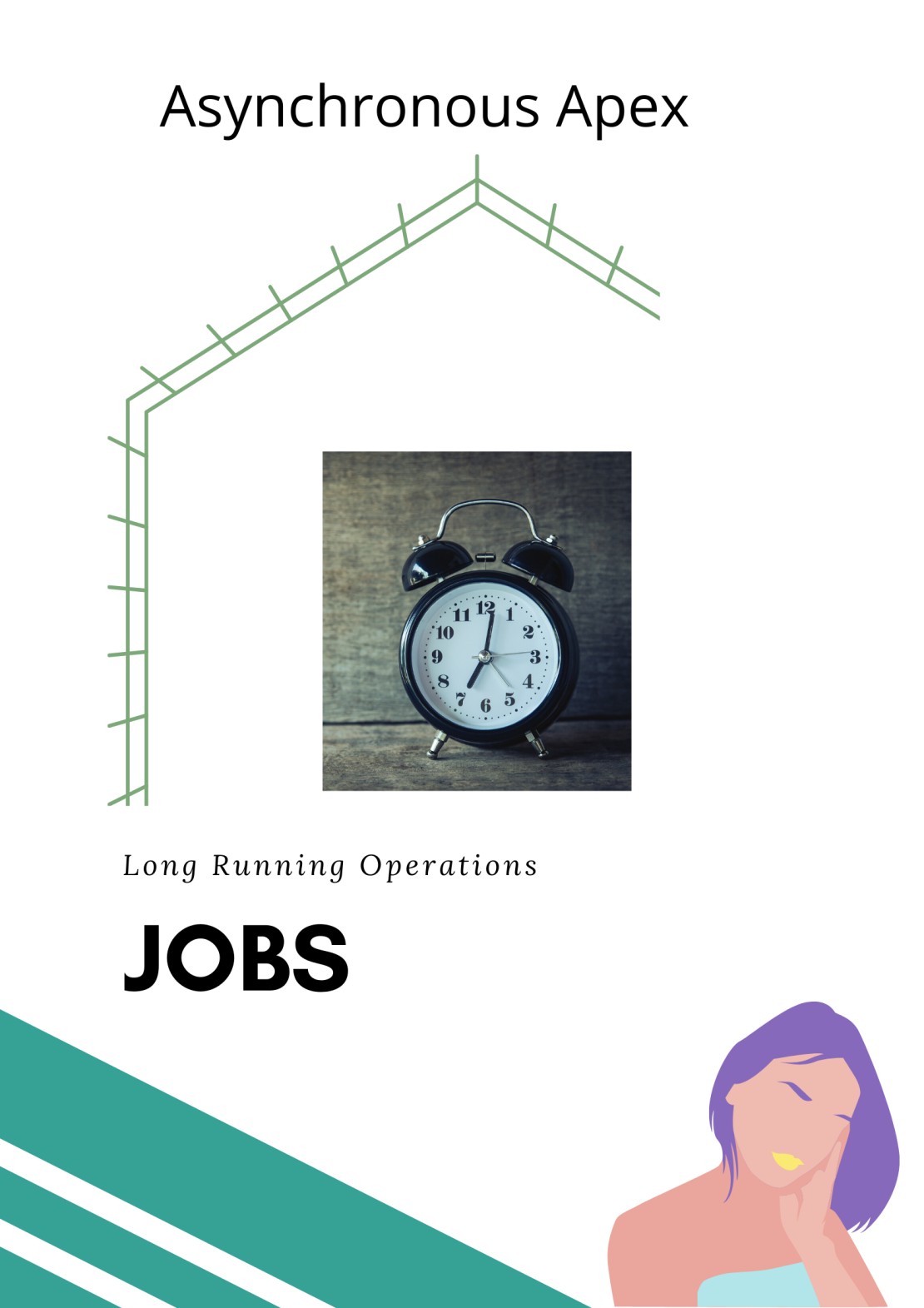Salesforce Asynchronous Apex Part 4
Contents
[NOTE] Updated 5 years ago. This article may have outdated content or subject matter.
Preface
Checkout the following articles before tackling this one:
Learning Objectives
After completing this article, you’ll be able to describe:
Prologue
Queueable apex is an apex method use to run batch processes asynchronously. Queueable apex is the abstract combination between future methods and batchable apex. Executing Queueable apex enqueues each job to the Apex job queue. This feature is a evolution over Future methods, they functionally equivalent, however Queueable apex allows job chaining and usage for more complex data types. They also share a benefit of having some higher governor limits.
Benefits
Listed are some the advantages when using Queueable apex:
- Chaining jobs: Submitted jobs can be chained together, by starting a second job from a running job
- You can monitor submitted jobs progress by querying on the job-id returned
- Provides the capability to use non-primitive data types, such as sObjects or custom Apex types
Limitations
Please bare the following in mind, when considering Queueable apex implementations:
- The execution for Queueable apex counts against shared asynchronous method call limit
- You can only add up to 50 jobs to the queue with
System.enqueueJob - When chaining jobs, you can only can add one job from the current job executing
- meaning that only one child job can exist for each parent Queueable job
Best Practices
Listed below are a few best practices to keep into consideration for Queueable apex:
- Do not enqueue a job in a trigger, if you can’t guarantee that , such invocation will cause further executions
- Queueable apex only has the
executemethod, you are not given the luxury of thestartmethod in batchable apex- Therefore you of to build helper methods to query records and set member variables for processing
- Only chain one job per executing job transaction context
Queueable Apex Syntax
To use Queueable Apex, simply implement the Queueable interface.
| |
Monitoring
The result of the method System.enqueueJob will return the current queue transaction id. You can use that id to query the AsyncApexJob records. Each Queueable Apex invocation creates an AsyncApexJob record.
Practical Example
The example below demonstrates using the Queuable apex feature to update a custom boolean field(Aligned__c) on the Account object, to equal true only if some the associated opportunities Amount is > $5000.
- Create a Boolean field on the Account object called
Aligned.
| |
Testing QueueAccounts
The following code snippet below tests the QueueAccounts class.
Note: this example uses the
@testSetupannotation. Methods defined with the@testSetupannotation are used for creating common test records that are available for all test methods in the class. You must run the Queueable instantiation synchronously usingTest.startTest()andTest.stopTest().
| |
Chaining Jobs
Queueable apex provides the capability to chain jobs sequentially, To chain a job to another job, submit the second job from the execute()method of your queueable class. You can add only one job from an executing job, which means that only one child job can exist for each parent job.
You can’t chain queueable jobs in an Apex test, doing so results in an error. To avoid nasty errors, you can check if Apex is running in test context by calling
Test.isRunningTestbefore chaining jobs.
| |
Epilogue
In concluding this article, Queuable apex was discussed, including but not limited to, the use cases, the various distinctions between other asynchronous features on the Salesforce platform. The best practices and limitations were also listed and described. Sample code examples were also provided to cement the concepts discussed, as well as chaining jobs. Thanks for stopping by 😃 and i hope you was able to learn something new or reinforce what you already knew. A través del aprendizaje continuo, ¡mejorará!
Author Remario Richards
Modified April 01, 2020

